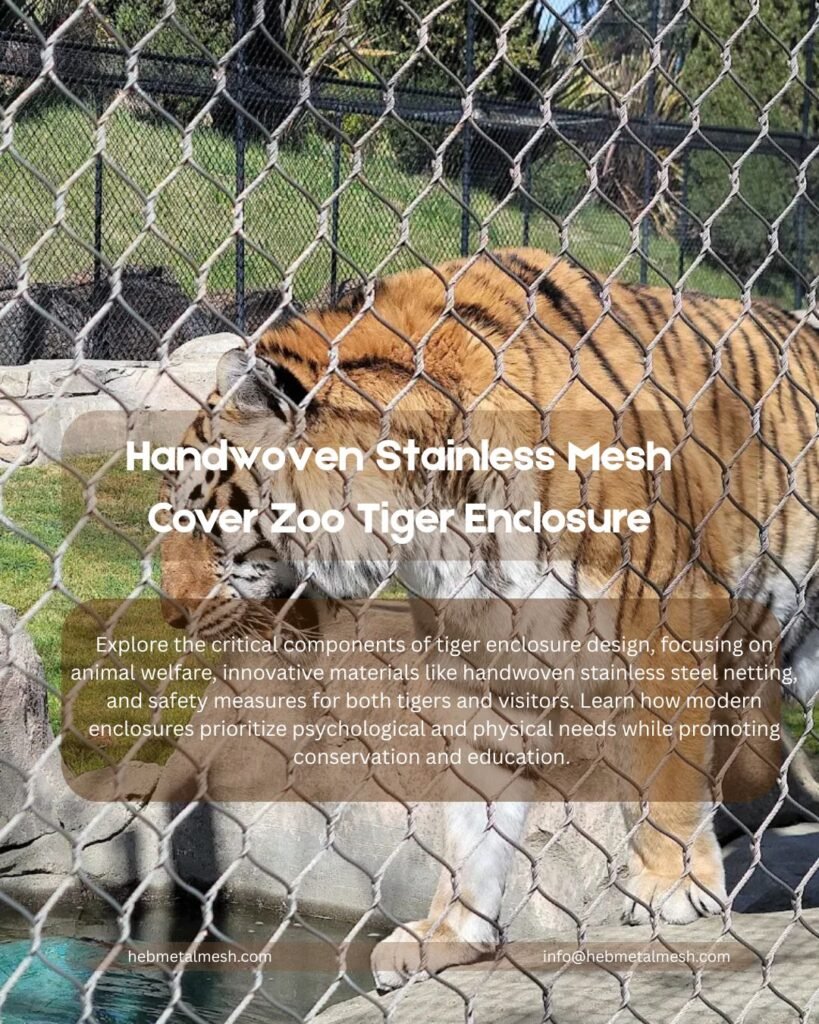Introduction to Tiger Enclosures
Tiger enclosures serve as a critical component in the design of modern zoos, wildlife parks, and sanctuaries, providing a safe and secure habitat for these majestic creatures. Given their status as apex predators, creating enclosures that adequately meet their physical, psychological, and social needs is essential. This necessity extends beyond just safety for the animals; it also encompasses the well-being of visitors who seek to engage and learn from their experiences in these environments.
When designing a tiger enclosure, prioritizing animal welfare is paramount. The enclosure must offer ample space for tigers to roam, climb, and exhibit natural behaviors, fostering both physical fitness and psychological stimulation. Additionally, the design should incorporate features such as enrichment tools, hiding spots, and water bodies that allow tigers to engage with their surroundings in a manner that aligns with their instincts. Such features not only contribute to the animals’ comfort but also enhance their overall quality of life.
Moreover, an essential aspect of any tiger habitat in a public setting is visibility. Well-structured enclosures should ensure that visitors can observe these magnificent big cats without compromising their safety or comfort. Innovative designs often blend naturalistic elements with transparent barriers, allowing for unobstructed views of the tigers while maintaining a safe distance. This creates an environment conducive to education and appreciation, prompting visitors to gain a deeper understanding of tiger behavior and conservation efforts.
As the demand for state-of-the-art enclosures continues to grow, focus has shifted towards creating environments that are not only visually stunning but also integrate modern technologies and sustainable practices. This evolution in design reflects a broader commitment to ethical wildlife management and conservation, ensuring that tiger enclosures serve as both sanctuaries for the animals and educational platforms for the public.
Handwoven stainless steel netting for Tiger nature habitats
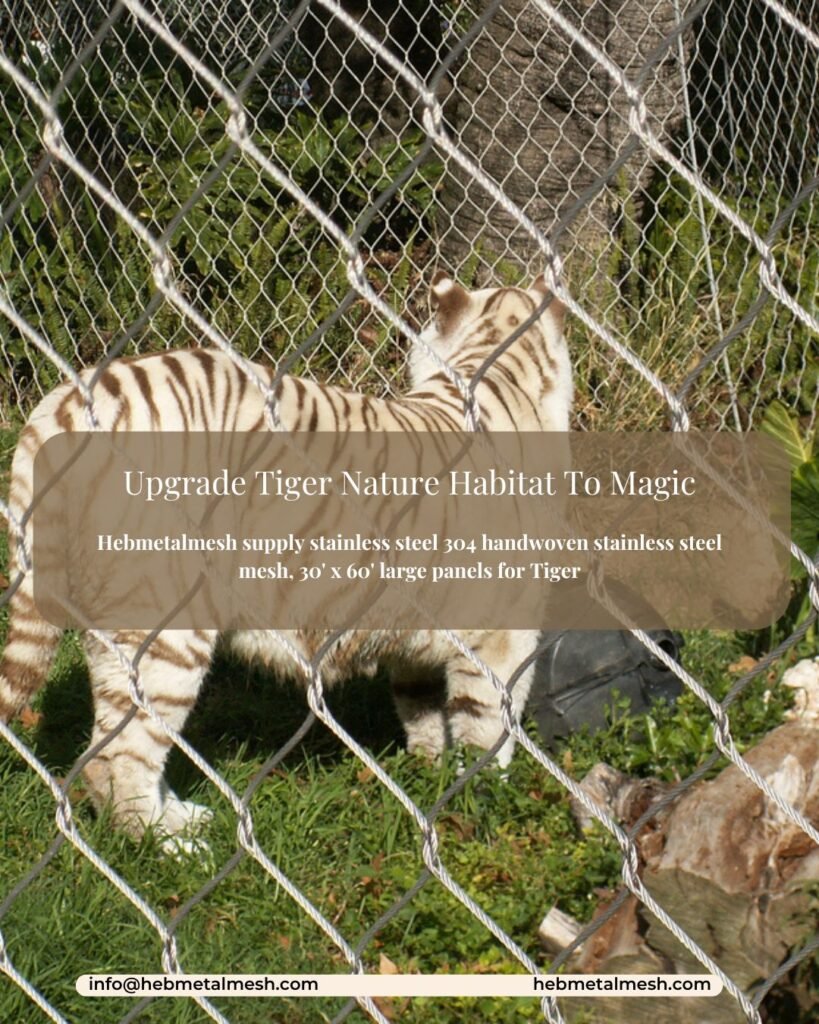
We accept customized rope diameter, material and mesh size. The wire rope is smooth, protecting the fur from being damaged.
We provide the regular specifications for your reference.
| Item ID | Mesh Details | Material |
|---|---|---|
| HM2438 | 1.5″ x 1.5″ x 3/32″ | SS304/316 |
| HM2450 | 2″ x 2″ x 3/32″ | SS304/316 |
| HM2476 | 3″ x 3″ x 3/32″ | SS304/316 |
| HM24102 | 4″ x 4″ x 3/32″ | SS304/316 |
| HM3250 | 2″ x 2″ x 1/8″ | SS304/316 |
| HM3276 | 3″ x 3″ x 1/8″ | SS304/316 |
| HM32102 | 4″ x 4″ x 1/8″ | SS304/316 |
Understanding the Requirements for a Tiger Enclosure
Designing a suitable tiger enclosure entails several critical factors that must be meticulously considered to ensure the well-being of these majestic creatures. First and foremost is the provision of adequate space. Tigers are highly territorial animals that require extensive areas to roam, explore, and engage in natural behaviors. As a general guideline, a minimum of 1,000 square meters is often recommended for a single tiger, although larger spaces should be encouraged to foster healthier living conditions.
Moreover, simulating a natural habitat is essential for a tiger enclosure. Incorporating features such as trees, rocks, water bodies, and varied terrain not only enhances the aesthetic appeal but also provides mental stimulation and encourages physical activity. These elements allow tigers to exhibit more natural behaviors, which is crucial for their psychological well-being. The enclosure should also offer various hiding spots, enabling the tigers to retreat and feel secure, mirroring their natural instincts.
In addition to the physical aspects of the habitat, safety features are paramount in the design of a tiger enclosure. The enclosure should include sturdy fencing capable of withstanding the strength of these big cats, with heights reaching at least 4 meters and the possibility of an overhang to prevent escapes. Additionally, double-gate systems can ensure that tigers do not accidentally escape during maintenance procedures. Regular inspections and maintenance are vital to uphold the structural integrity of these enclosures, safeguarding both the animals and visitors alike.
Compliance with regulatory standards and guidelines is another critical component of designing a tiger enclosure. Various organizations and governments have established protocols to ensure that captive tigers live in environments that meet their physical and psychological needs. Incorporating these requirements not only promotes animal welfare but also enhances the overall reputation of the facility. By adhering to such guidelines, the design of the tiger enclosure can reflect a commitment to conservation and ethical animal care.

The Role of Handwoven Stainless Steel Netting
When designing a tiger enclosure, the choice of materials plays a crucial role in ensuring both the safety of the animals and the security of the visitors. Among the various materials available, handwoven stainless steel netting has emerged as a top choice for enclosures housing these large and majestic creatures. This material possesses several characteristics that make it exceptionally suitable for containing tigers while prioritizing durability and aesthetic appeal.
First and foremost, handwoven stainless steel netting offers remarkable strength and resilience. It is engineered to withstand the considerable force exerted by tigers, who are known for their agility and power. Unlike conventional fencing options, which can corrode or deteriorate over time, stainless steel maintains its structural integrity, even in harsh environmental conditions. The netting’s handwoven design adds an extra layer of durability, ensuring that even if a tiger were to exert significant pressure, the enclosure remains secure and intact.
Moreover, stainless steel netting is resistant to rust and environmental wear, which is particularly important in settings exposed to varying weather conditions. This longevity translates into lower maintenance costs over the long term. In addition to functional benefits, the aesthetic qualities of handwoven stainless steel netting allow for unobtrusive integration within a naturalistic habitat design, enhancing the visual appeal of the tiger enclosure.
A key consideration in any tiger enclosure design is the visibility it offers to spectators. Handwoven stainless steel netting allows for clear sightlines, enabling visitors to observe tigers up close without compromising safety. This transparency fosters an educational experience and promotes a deeper appreciation for these animals. The blend of safety and aesthetics offered by this material ultimately creates an engaging environment for both tigers and their human counterparts.
Technical Specifications of Our Stainless Steel Netting
When designing a tiger enclosure, the choice of materials is paramount, particularly when it comes to the safety and aesthetic aspects of the structure. Our stainless steel netting is crafted from high-quality 304 stainless steel, known for its strength, durability, and resistance to corrosion. This quality is essential for ensuring that the tiger enclosure remains secure and safe for both the animals and the visitors. The specifications of this netting play a critical role in achieving these goals.
The stainless steel netting features a mesh size of 3″ x 3″, which has been meticulously chosen to balance visibility and safety. This size is small enough to prevent tigers from escaping while allowing for clear sightlines, ensuring that both tigers and visitors can enjoy an unobstructed view of each other. The wire diameter of 1/8″ adds an extra layer of security; it is sufficiently robust to withstand the natural behaviors of tigers such as climbing and scratching. This diameter also contributes to the overall longevity of the enclosure, reducing the need for frequent replacements or repairs.
Moreover, the netting comes in various color options, including natural and black oxide finishes. These aesthetic features are designed with both safety and visual appeal in mind. The natural finish ensures that the enclosure harmonizes with the environment, promoting an immersive experience for visitors. In contrast, the black oxide option provides a modern, sleek appearance that can enhance the overall design of the tiger enclosure without compromising on safety. These colors not only contribute to the aesthetic integration of the enclosure into its surroundings but also help in minimizing the visual impact of the netting, thereby offering an engaging environment for observers and the tigers alike.

Customizable Options for Unique Enclosure Designs
The design of a tiger enclosure is critical not only for the safety and well-being of the animals but also for creating an aesthetically pleasing habitat that can mimic their natural environment. One of the essential aspects of these designs is customization, which allows for meeting specific requirements based on the layout and geographical features of the site. By offering customizable options, designers can adapt enclosures to suit the unique characteristics of the landscape, thereby enhancing both functionality and visual appeal.
One of the flexible solutions available for these projects is the large roll sizes of the materials, such as netting, which typically come in dimensions of 30′ x 60′. This size allows designers to create expansive tiger enclosures that accommodate the roaming habits of these majestic creatures. With the availability of such large roll sizes, the process of crafting an enclosure becomes more efficient, reducing the number of seams and potential weak points in the construction. Furthermore, designers have the opportunity to integrate undulating terrain or natural features into the enclosure, providing a more immersive environment for the tigers.
Customization not only pertains to size but also extends to the choice of materials. Various options can be selected based on durability, visibility, and safety. For instance, high-quality netting can provide an unobstructed view for visitors while ensuring the security of the tigers. In addition to netting, customized features like water elements, climbing structures, and natural foliage can be incorporated, contributing to the overall habitat’s usability and aesthetic. These adjustments create a more enriching experience for the tigers and serve to educate the public about their natural behaviors and habitats, making the tiger enclosure a focal point of any wildlife facility.
Direct Factory Production: Quality and Affordability
Purchasing a tiger enclosure directly from the factory presents a multitude of advantages that extend beyond mere cost-effectiveness. By acquiring enclosures straight from the manufacturer, buyers are not only benefiting from lower prices due to reduced middleman costs, but they are also ensuring that they receive high-quality products that adhere to stringent safety standards. This direct relationship fosters a level of transparency and trust that is essential when it comes to the well-being of these magnificent animals.
The production process itself is designed with quality assurance as a top priority. Factories utilize advanced materials and cutting-edge manufacturing techniques to create enclosures that withstand both environmental stressors and potential hazards posed by the tigers. High-quality netting is essential in tiger enclosures to prevent escape and ensure the safety of both the animals and the public. Each component undergoes rigorous quality checks throughout the production cycle, from the selection of raw materials to the final assembly stages. This meticulous attention to detail not only enhances the durability of the netting itself but also reduces the likelihood of costly repairs or replacements in the future.
In addition to ensuring quality, direct factory production allows for customization options tailored to the specific needs of individual clients. This flexibility can be vital for facilities that manage multiple species or have unique space constraints. By engaging directly with the factory, clients often have the opportunity to communicate their requirements and preferences, which can lead to the development of a tiger enclosure that meets both safety and aesthetic ideals.
In summary, opting for a tiger enclosure produced directly from the factory can lead to significant savings and peace of mind, ensuring that the latest standards in safety and quality are met or even exceeded. The integration of advanced manufacturing practices further solidifies the value of this approach, making it a smart choice for those responsible for the care of these extraordinary animals.
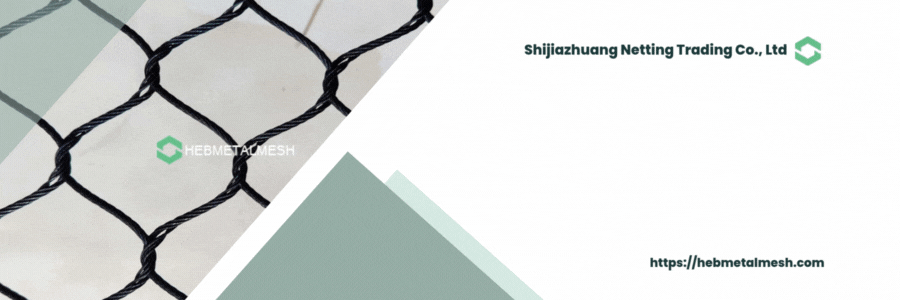
Innovative Design Ideas for Tiger Enclosures
In the realm of wildlife conservation, creating an enriching and safe environment for tigers is paramount. Innovative design ideas for tiger enclosures can significantly enhance both the well-being of these magnificent creatures and the experience of visitors. One standout concept involves the use of handwoven stainless steel netting, which offers a robust yet aesthetically pleasing solution. This material not only provides an unobtrusive barrier but also allows for excellent visibility, ensuring that visitors can observe tigers in their naturalistic settings without compromising safety.
Successful projects, such as those implemented in various zoos and sanctuaries, demonstrate the effectiveness of integrating these design elements. For example, the innovative use of stainless steel netting has enabled designers to create open-air enclosures that mimic the tiger’s natural habitat, fostering a more genuine interaction between the animals and their environment. These enclosures often incorporate vertical space with climbing structures, providing exercise opportunities and mental stimulation for the tigers. Such designs take advantage of height and depth, allowing tigers to exhibit their natural behaviors in a setting that feels more like their native habitat.
Moreover, blending natural elements within the enclosure also plays a vital role in enhancing the overall atmosphere. Landscaping with native plants, rock formations, and water features can create a lifelike environment that not only supports the tigers’ emotional and physical health but also captivates visitors. This holistic approach to enclosure design is beneficial for educational purposes, as it promotes awareness about tiger conservation while ensuring that visitors can enjoy a safe and informative experience. The movement towards creative, yet practical, solutions in tiger enclosure design marks a significant advancement in animal care practices, emphasizing the importance of innovation in wildlife facilities.
Safety First: Ensuring Protection for Tigers and Visitors
The design of a tiger enclosure prioritizes safety for both the majestic animals and their visitors. It is essential to create a space that safeguards tigers while allowing for enriching experiences for those who come to observe them. The choice of materials and structural integrity plays a vital role in achieving this safety balance. One effective solution embraced by many zoos and wildlife parks is the use of stainless steel netting. This material provides a durable barrier that can withstand the strength of tigers while offering a clear line of sight for guests to engage with the animals.
Stainless steel netting is both robust and visually appealing, enabling a transparent envelopment that does not obstruct the natural behaviors of tigers. This innovative feature helps educate visitors on the species’ dynamics, encouraging respect for their habitat. Proper implementation of safety measures is particularly critical, especially in light of past incidents where inadequate enclosures have led to unfortunate outcomes. For instance, there have been cases where improper barrier design resulted in escapes or attacks, emphasizing the necessity for rigorous safety protocols.
To prevent such incidents, proper design practices must include extensive risk assessments, expert consultations, and adherence to industry standards regarding dimensions and materials in tiger enclosures. Integrating sensory enrichment tools can also serve as a deterrent to unwanted interactions, ensuring that tigers are engaged and occupied, reducing stress and aggressive tendencies. Creating an environment where both tigers and visitors feel secure is paramount. Ultimately, a meticulously designed tiger enclosure not only safeguards the animals but also enriches the overall experience by allowing safe visitor interaction, fostering a deeper appreciation for these magnificent creatures.
Conclusion: The Future of Tiger Enclosures
As we look towards the future of tiger enclosures, the integration of innovative materials such as handwoven stainless steel netting presents numerous benefits that should not be overlooked. This unique material offers not only enhanced durability and safety but also enables the construction of habitats that closely mimic the natural environments of these majestic creatures. The use of stainless steel netting removes the risks associated with traditional materials, while maintaining visibility for visitors and ensuring the comfort of the tigers themselves.
Well-designed tiger enclosures are crucial for the overall welfare of these animals. An enclosure that prioritizes both safety and aesthetics facilitates a more engaging experience for zoo-goers, fostering a deeper appreciation for wildlife. Moreover, when enclosures are constructed with care and innovative materials, they can seamlessly blend into their surroundings, promoting a naturalistic atmosphere that benefits both the tigers and their visitors. This not only aids in the conservation efforts of the species but also advances public education about the importance of wildlife preservation.
In conclusion, it is imperative for zoo planners, wildlife park designers, and farms to consider innovative, safe, and customizable options when designing tiger enclosures. By embracing new technologies and sustainable practices, professionals in this field can create environments that prioritize the safety and health of tigers while also enhancing visitor experiences. Such thoughtful designs will help ensure the survival of these magnificent animals, enabling future generations to marvel at their beauty in settings that respect their natural behavior and habitat needs.
Various solutions for tiger enclosure system
The following are the common protection schemes and specifications for tiger fences.
Zoo Tiger Enclosure Cases
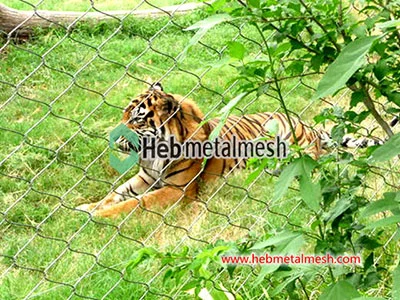
Recommend specifications :
Handwoven stainless steel netting HM3276;
Stainless steel wire rope: 1/8″ (3.18 mm);
Mesh opening size: 3″ x 3″ (76 mm x 76 mm);
Tiger Enclosure Project
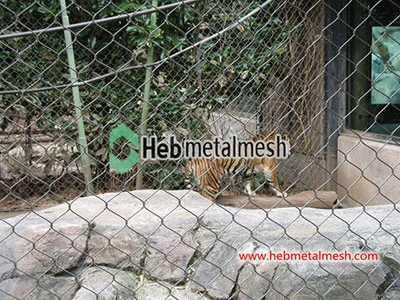
Recommend specifications :
Handwoven stainless steel netting HM2476;
Stainless steel wire rope: 3/32″ (2.38 mm);
Mesh opening size: 3″ x 3″ (76 mm x 76 mm);
Zoo enclosures netting for Tiger exhibits
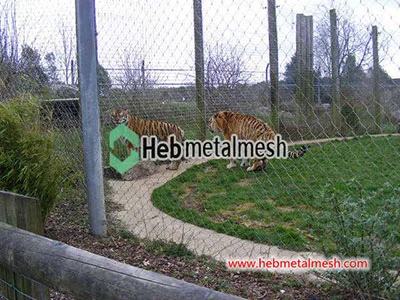
Recommend specifications :
Handwoven stainless steel netting HM2450;
Stainless steel wire rope: 3/32″ (2.38 mm);
Mesh opening size: 2″ x 2″ (51 mm x 51mm);
Zoo enclosures for tiger exhibit cages
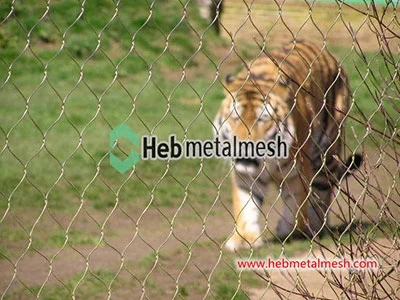
Recommend specifications :
Handwoven stainless steel netting HM3250;
Stainless steel wire rope: 1/8″ (3.18 mm);
Mesh opening size: 2″ x 2″ (51 mm x 51 mm);
Zoo enclosures mesh for tiger enclosure, tiger exhibit, tiger pen, tiger cages

Recommend specifications :
Handwoven stainless steel netting HM3276;
Stainless steel wire rope: 1/8″ (3.18 mm);
Mesh opening size: 3″ x 3″ (76 mm x 76 mm);
Zoo Mesh for tiger enclosure, tiger exhibit, tiger pen, tiger cages
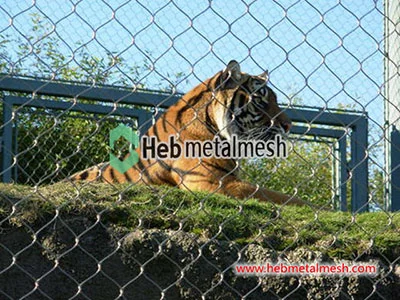
Recommend specifications :
Handwoven stainless steel netting HM3250;
Stainless steel wire rope: 1/8″ (3.18 mm);
Mesh opening size: 2″ x 2″ (51 mm x 51 mm);
In general, the size of the tiger determines the size of the mesh aperture. The degree of tiger damage determines the wire rope diameter, and the specific specification needs to be selected according to the actual Tiger fence mesh.
In addition, we also have the following stainless steel rope mesh product specifications suitable for application for tiger enclosure fence protection.
FAQs for Handwoven Stainless Steel Netting for Tiger Enclosures
Handwoven stainless steel netting is a top choice for tiger enclosures due to its unmatched strength, flexibility, and predator-resistant design. Tigers are powerful animals, and our netting is engineered to withstand high-impact forces while maintaining structural integrity. The tightly woven mesh prevents claws or teeth from penetrating, ensuring both animal safety and visitor security. Long-tail keyword integration: “stainless steel netting for large predator habitats” is specifically designed for species like tigers.
Our stainless steel netting is corrosion-resistant, weatherproof, and built to endure extreme conditions, making it perfect for outdoor tiger enclosures. It resists rust, UV damage, and temperature fluctuations, ensuring longevity in zoos, wildlife parks, or sanctuaries. Long-tail keyword example: “weather-resistant stainless steel mesh for tiger habitats” ensures minimal maintenance over decades.
No. The handwoven construction allows for customizable weaving density, eliminating weak points. For tiger enclosures, we recommend a wire thickness of 3-5mm and gaps under 2 inches to prevent tampering. Long-tail phrase: “escape-proof stainless steel netting for big cat enclosures” is a common request we fulfill for wildlife facilities.
Yes! Our netting’s flexibility and load-bearing capacity (up to 1,500 lbs/sq ft) make it ideal for climbing frames, roofs, or barriers. It’s often used in “customizable tiger enclosure mesh for climbing enrichment” to promote natural behaviors without compromising safety.
Installation requires anchoring the netting to reinforced posts or frames. We provide detailed guides and optional professional consultation for “heavy-duty stainless steel mesh installation for tiger enclosures”. Modular panels can be welded or clamped for seamless integration.
